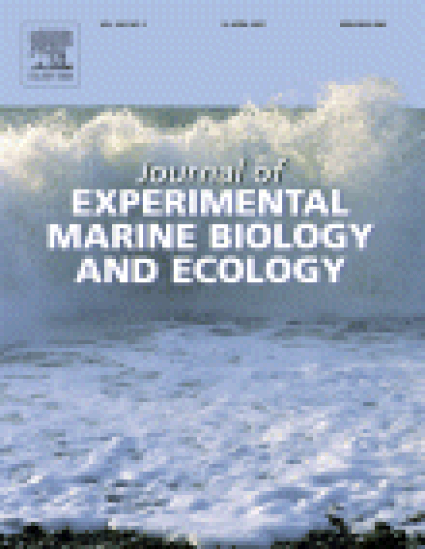
Article
The Contribution of Anaerobic Energy to Gastropod Crawling and a Re-estimation of Minimum Cost of Transport in the Abalone, Haliotis kamtschatkana
Journal of Experimental Marine Biology and Ecology
(1999)
Abstract
The contribution of anaerobic metabolism to the minimum cost of transport (COTmin; energy required to transport a unit mass over a unit distance, excluding maintenance and postural costs) was determined for the abalone Haliotis kamtschatkana. Abalone were induced to crawl in water for 6 m at speeds up to 9.9 shell lengths·min−1. Changes in the concentrations of the anaerobic metabolites tauropine, D-lactate, arginine phosphate, and arginine occurred in foot muscle, but only at speeds at or above five shell lengths·min−1. These metabolites did not change significantly in the shell adductor muscle. The amount of anaerobically derived ATP used during crawling was calculated and the values were compared with data for aerobic ATP production. Anaerobic metabolism accounted for 54% of COTmin, and the aerobic COTmin estimated by Donovan and Carefoot (1997) [Donovan, D.A., Carefoot, T.H., 1997. Locomotion in the abalone Haliotis kamtschatkana: pedal morphology and cost of transport. J. Exp. Biol. 200, 1145–1153] was thus adjusted from 20.3 J·kg−1 m−1 to 44.1 J·kg−1 m−1. This new value places abalone above the regression line of log10COTmin on log10mass for running vertebrates, indicating that transport costs for abalone are more expensive than for the average similar-sized runner. The contribution of anaerobic metabolism was also determined for prolonged air exposure and whole animal righting behavior to allow comparisons to be made with other abalone species for which these data, but not data on anaerobic metabolism during crawling, were available in the literature. On this basis, we suggest that in comparison to H. kamtschatkana, Haliotis lamellosa and Haliotis iris may have lower aerobic scopes during crawling, while that of Haliotis asinina may be considerably higher.
Keywords
- Abalone,
- Anaerobic glycolysis,
- Cost of transport,
- Haliotis kamtschatkana,
- Locomotion,
- Tauropine dehydrogenase
Disciplines
Publication Date
March 15, 1999
Publisher Statement
Copyright © 1999 Elsevier Science B.V. DOI:10.1016/S0022-0981(98)00174-9
Citation Information
Deborah A. Donovan, John Baldwin and Thomas H. Carefoot. "The Contribution of Anaerobic Energy to Gastropod Crawling and a Re-estimation of Minimum Cost of Transport in the Abalone, Haliotis kamtschatkana" Journal of Experimental Marine Biology and Ecology Vol. 235 Iss. 2 (1999) Available at: http://works.bepress.com/deborah_donovan/17/
